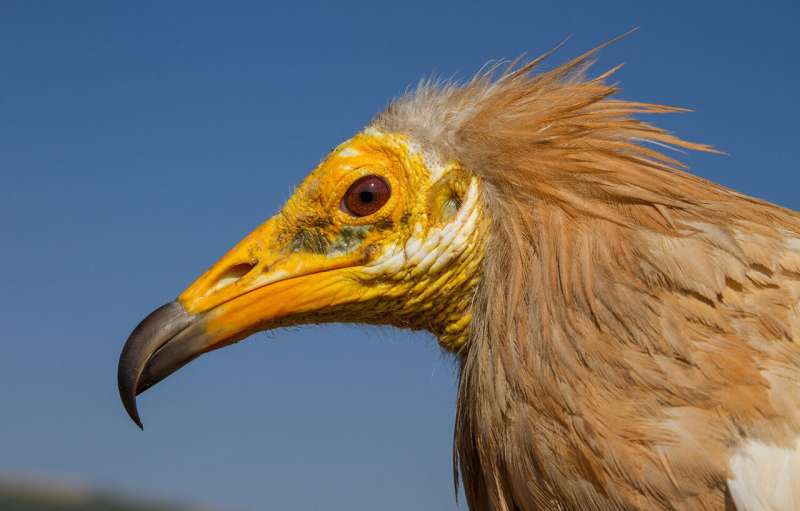Endangered vultures in southeastern Europe largely threatened due to human activity

Contrary to popular belief, the number of Egyptian vultures dying in Eastern Europe and the Middle East is greater than in sub-Saharan Africa; and half of these disappear due to threats of human origin: electrocution, collision with energy infrastructures, direct persecution or poisoning. This is shown in an article published in the Journal of Animal Ecology with the participation of the Cavanilles Institute of the University of Valencia.
The decline in long-distance migratory bird populations has often been considered a consequence of deteriorating conditions in non-reproductive areas. While previous studies suggested that the decline in migratory bird populations in Europe and North America was caused by threats in Africa and southern countries, new international research to monitor the Egyptian vulture –a species of vulture which has been on the list of endangered species since 2007– indicates the opposite. The number of Egyptian vultures who die in Eastern and Middle Eastern Europe is higher than in sub-Saharan Africa.
After two decades of monitoring and study, a team of 38 researchers from 12 countries –including biologist Pascual López-López (Cavanilles Institute of the University of Valencia)– has published new results in the Journal of Animal Ecology. The work is directed by Evan Buechley (HawkWatch International, U.S.), Steffen Oppel (Centre for Conservation Science, Cambridge, UK) and Ron Efrat (University of the Negev, Israel).
Scientists tagged specimens with GPS remote tracking devices to study their behavior and mortality since the early 2000s; and collected and analyzed satellite tracking data from projects conducted in Europe, Africa and the Middle East, which allowed them to study the movements and destination of 220 Egyptian vultures equipped with GPS transmitters.
In addition to a higher survival rate in sub-Saharan Africa, the researchers found that about half of the deaths whose cause could be identified were due to human intervention. These deaths occurred in all regions of the study and were mainly due to electrocution, collision with energy infrastructure, direct persecution by humans –for example, by shooting or trapping– and especially in poisoning. "The blame for this loss of biodiversity cannot be put on the countries of the south," notes Evan Buechley, lead researcher on the study. "Dealing with threats of human origin to Egyptian vultures and many other migratory species is the responsibility of all countries that are part of the migration routes," the scientist adds.
The study addresses, on the other hand, fundamental issues of ecology, such as the high ecological costs in terms of long-distance migration survival, or important benefits such as increased reproductive productivity at higher latitudes. "Further research is needed to assess the vital commitments in terms of survival and reproduction throughout the life cycle in this endangered species," says Pascual López. "Studies like this highlight the need to address the conservation of endangered species through an international approach, beyond the individual borders of each country. Migratory birds such as the bustard, which live between several continents –Europe, Asia and Africa– are a clear example in this sense," concludes the researcher of the Cavanilles Institute of the University of Valencia.
More information: Evan R. Buechley et al. Differential survival throughout the full annual cycle of a migratory bird presents a life‐history trade‐off, Journal of Animal Ecology (2021).
Journal information: Journal of Animal Ecology
Provided by Asociacion RUVID





















